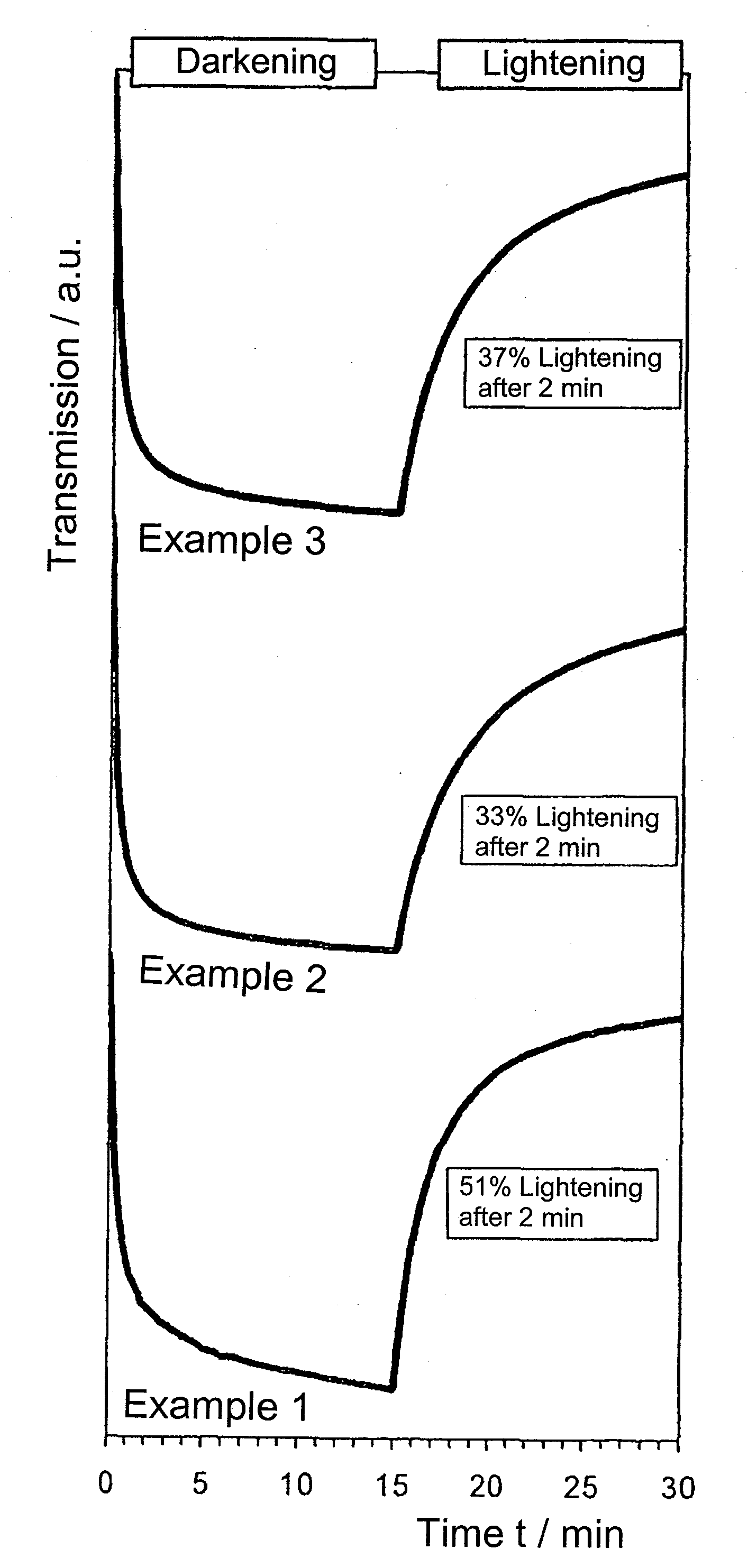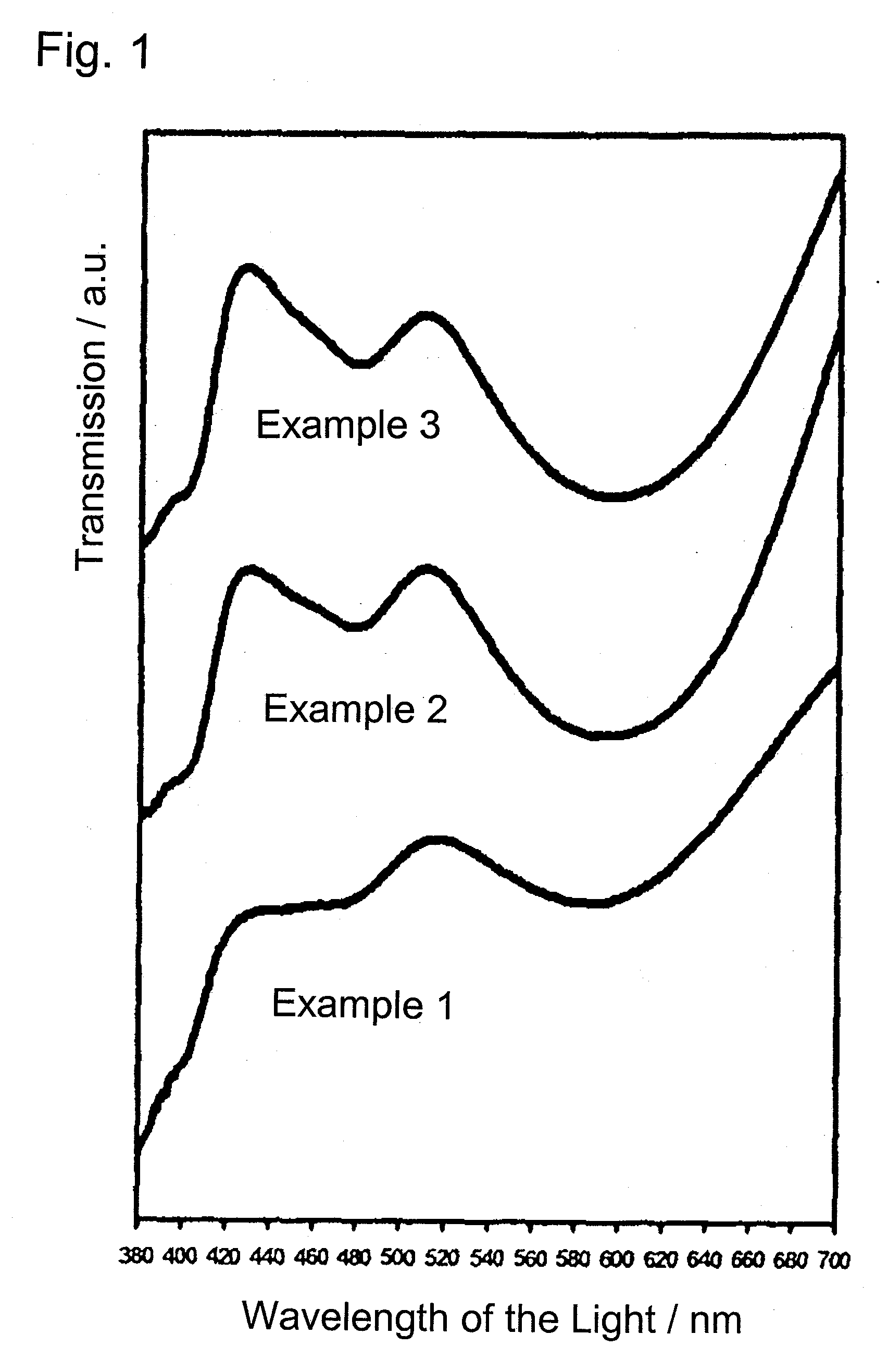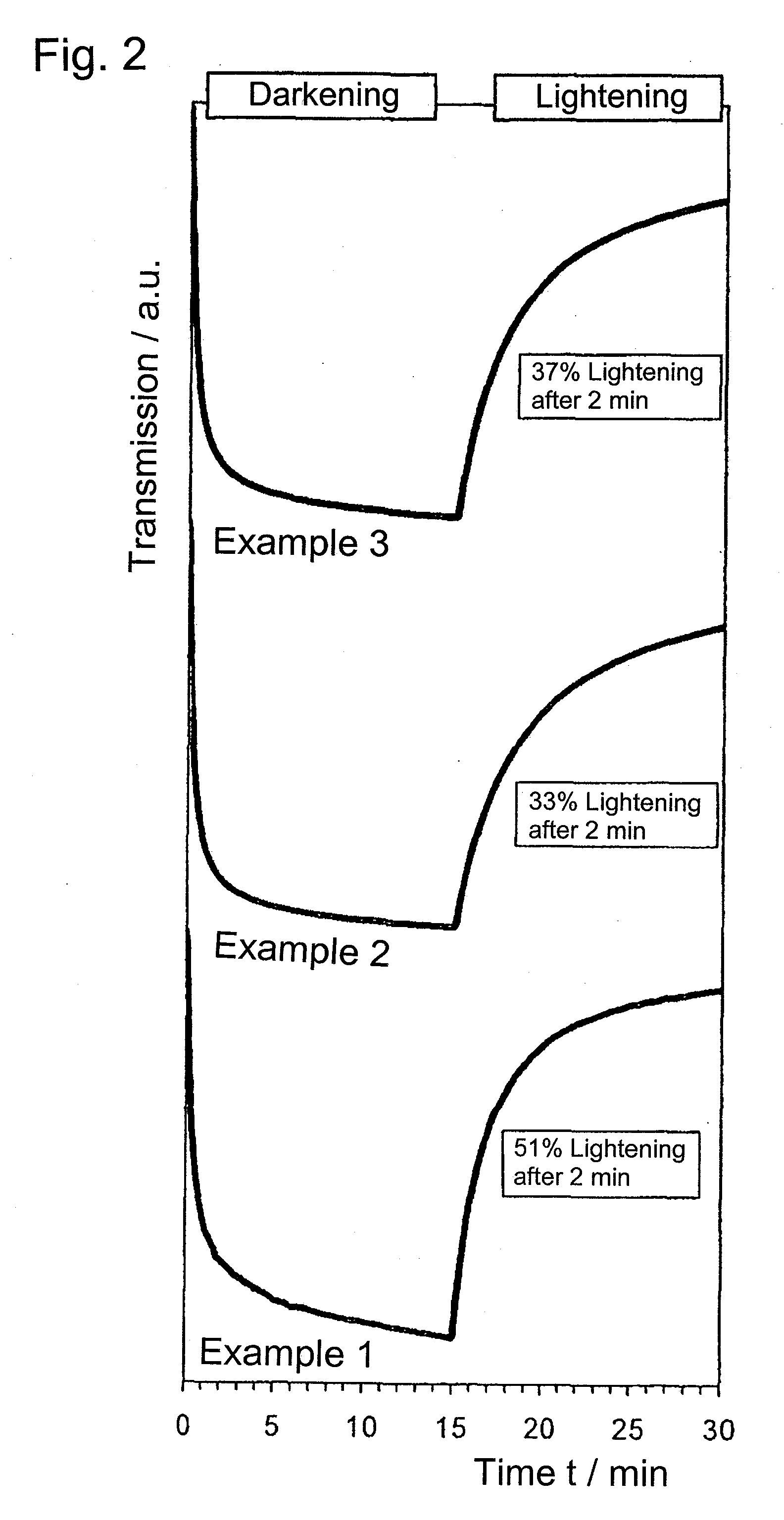Photochromic Plastic Object
a plastic object and photochromic technology, applied in the field of photochromic plastic objects, can solve the problems of significant efforts in research and developmen
- Summary
- Abstract
- Description
- Claims
- Application Information
AI Technical Summary
Benefits of technology
Problems solved by technology
Method used
Image
Examples
Embodiment Construction
[0050]FIG. 1 shows the change of the coloration of a spirofluorenopyran compound under the influence of the change of the mesoporous material used as the matrix (see preceding examples). The nanocomposite particles are introduced into identical plastic substrates in each case.
[0051]FIG. 2 shows the change of the kinetic properties of the spirofluorenopyran compound under the influence of the change of the mesoporous material used as a matrix in the form of a kinetic diagram. The values specified in FIG. 2 for the percentage lightening relate to the particular darkening after 15 minutes exposure using a xenon arc lamp at 50 klux.
[0052]For better overview, the spectra and kinetic plots are shifted toward one another on the ordinate.
[0053]As shown in the examples, the controlled production of porous nanoparticles, possibly in combination with methods for surface modification, results in tailor-made structures for embedding in the particular plastic substrates.
[0054]The foregoing descri...
PUM
| Property | Measurement | Unit |
|---|---|---|
| Nanoscale particle size | aaaaa | aaaaa |
| Nanoscale particle size | aaaaa | aaaaa |
| Transparency | aaaaa | aaaaa |
Abstract
Description
Claims
Application Information
 Login to View More
Login to View More - R&D
- Intellectual Property
- Life Sciences
- Materials
- Tech Scout
- Unparalleled Data Quality
- Higher Quality Content
- 60% Fewer Hallucinations
Browse by: Latest US Patents, China's latest patents, Technical Efficacy Thesaurus, Application Domain, Technology Topic, Popular Technical Reports.
© 2025 PatSnap. All rights reserved.Legal|Privacy policy|Modern Slavery Act Transparency Statement|Sitemap|About US| Contact US: help@patsnap.com



